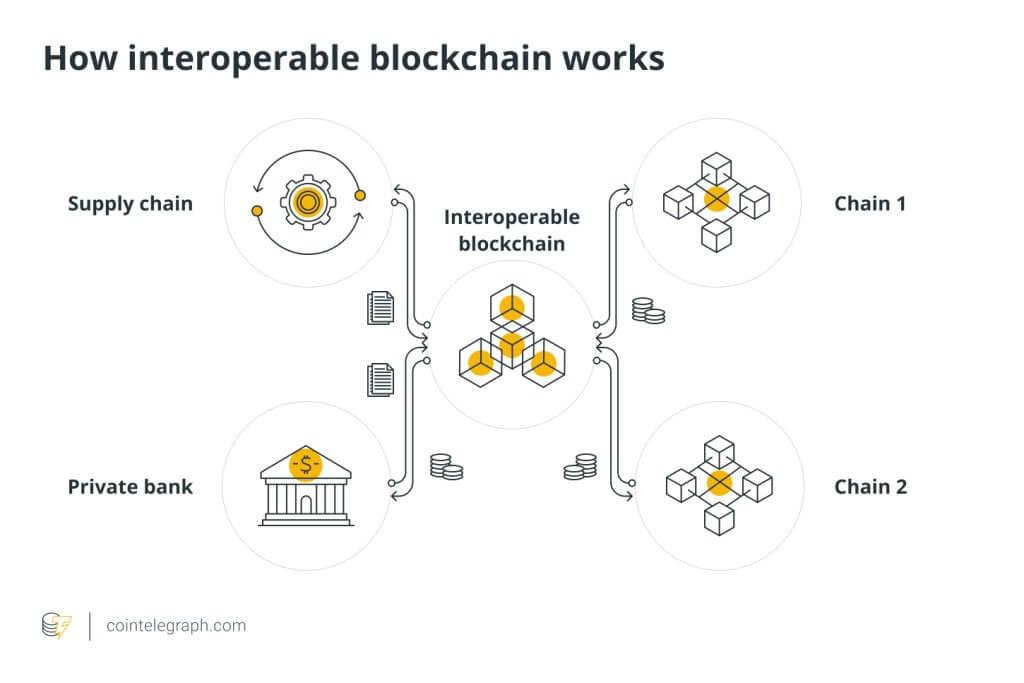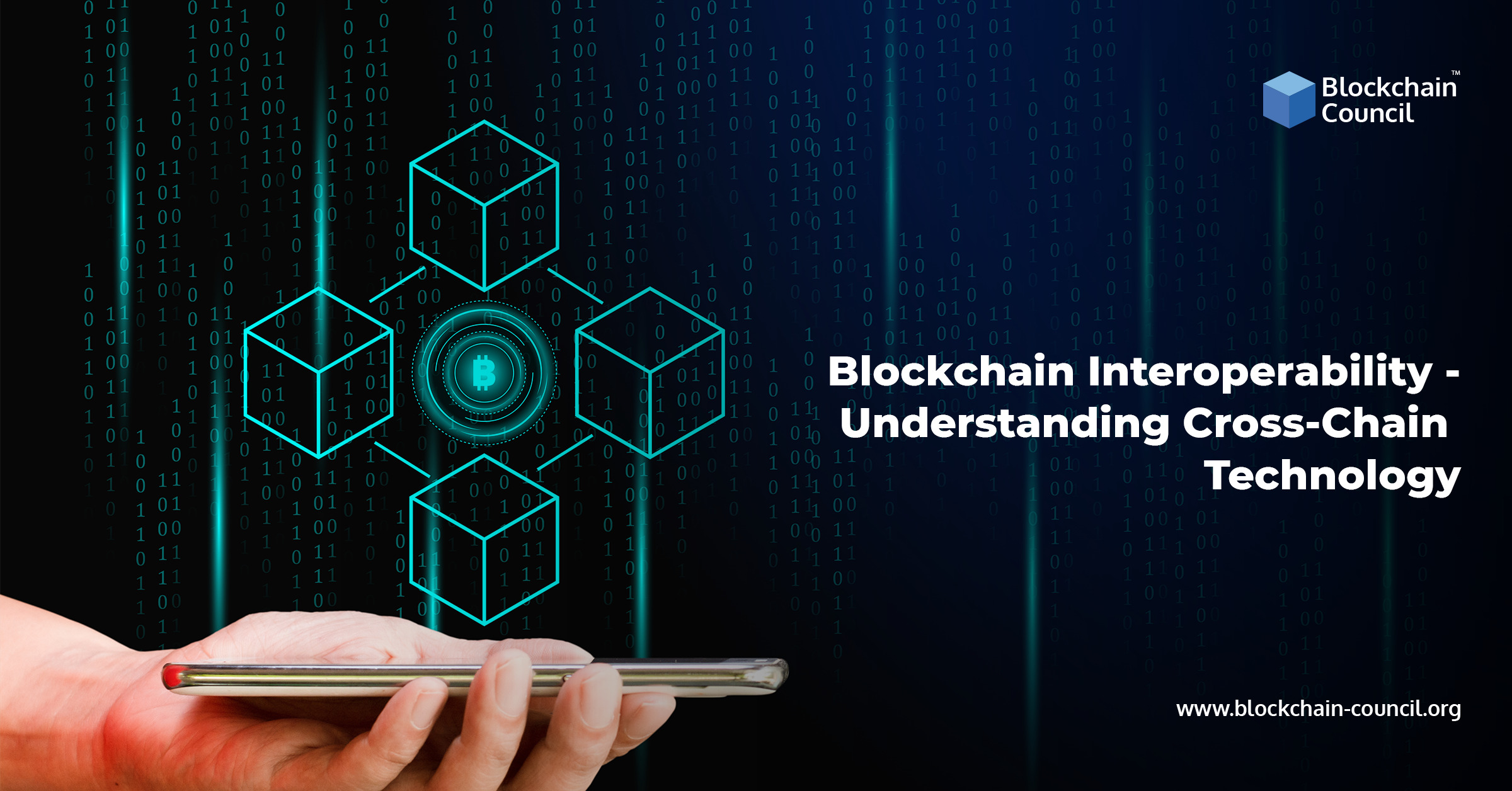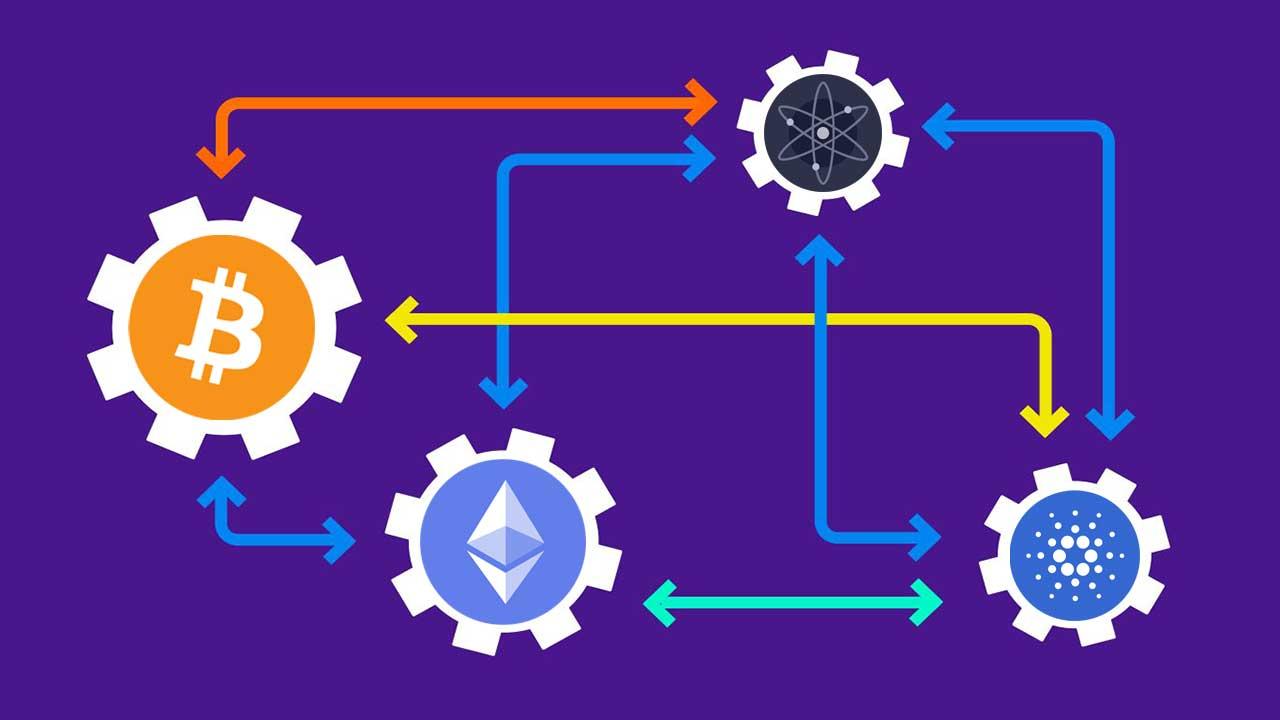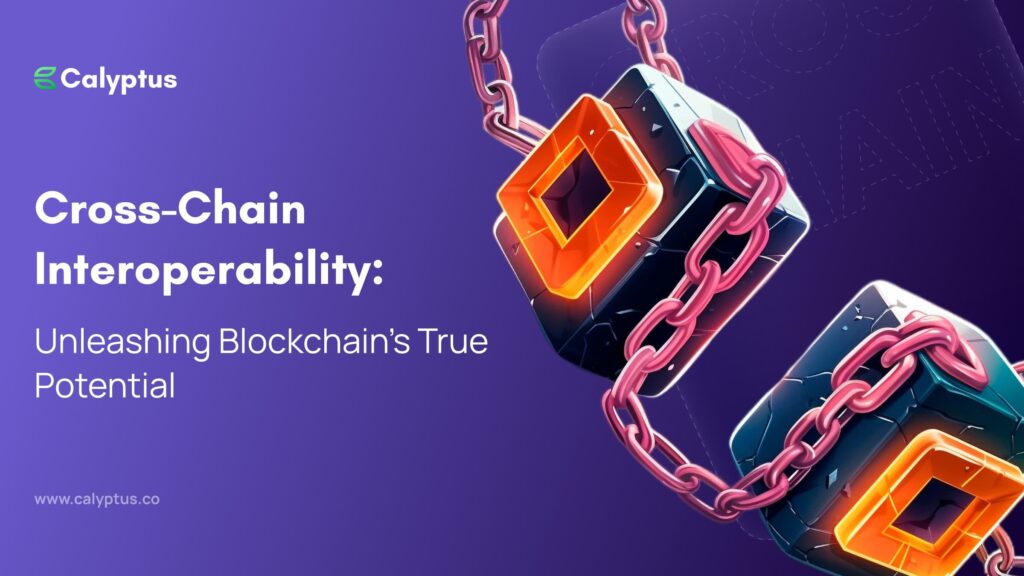In the rapidly evolving landscape of blockchain technology, the promise of a seamlessly connected digital ecosystem is becoming more than just a visionary ideal-it’s an emerging reality. As countless blockchain networks proliferate, each with its unique protocols and assets, the need for these diverse systems to communicate and collaborate has never been more critical. Enter cross-chain interoperability: the bridge that aims to unify fragmented blockchains into a harmonious web of interconnected value and information exchange. This article delves into the future of cross-chain interoperability, exploring the innovations, challenges, and transformative potential that lie ahead in creating a truly integrated blockchain universe.
Table of Contents
- The Evolution of Cross-Chain Technology and Its Impact on Blockchain Ecosystems
- Key Challenges in Achieving Seamless Cross-Chain Interoperability
- Emerging Protocols and Innovations Driving Cross-Chain Connectivity
- Strategic Approaches for Developers and Enterprises to Embrace Interoperability
- Future Outlook and Practical Recommendations for a Unified Blockchain Network
- Frequently Asked Questions
- Closing Remarks

The Evolution of Cross-Chain Technology and Its Impact on Blockchain Ecosystems
Blockchain technology started as isolated networks, each operating within its own ecosystem. However, as the number of blockchains multiplied, the need for seamless communication between these networks became undeniable. Early cross-chain solutions were rudimentary, often relying on centralized intermediaries that compromised decentralization principles. Over time, innovations such as atomic swaps, hashed timelock contracts (HTLCs), and blockchain bridges emerged, laying the groundwork for a truly interconnected digital ledger environment.
Today’s cross-chain technology leverages sophisticated protocols like Polkadot’s parachains, Cosmos’ Inter-Blockchain Communication (IBC), and advanced multi-chain smart contracts to enable secure and efficient interoperability. These innovations empower users to transfer assets, data, and even smart contract logic effortlessly across diverse networks. As a result, decentralized finance (DeFi), gaming, and NFT platforms are witnessing unprecedented growth fueled by collaborative ecosystems that transcend individual blockchains.
- Enhanced liquidity: Cross-chain swaps unlock access to a broader pool of assets.
- Improved scalability: Workloads can be distributed across multiple chains.
- Greater user choice: Applications can tap into the strengths of different blockchains.
- Robust security: Decentralized bridges reduce single points of failure.
| Era | Key Innovation | Impact |
|---|---|---|
| Early 2010s | Atomic Swaps | Peer-to-peer asset exchanges without intermediaries |
| Late 2010s | Cross-Chain Bridges | Asset transfers between isolated blockchains |
| 2020s | Multi-Chain Protocols (e.g., Polkadot, Cosmos) | Seamless interoperability and shared security |
Key Challenges in Achieving Seamless Cross-Chain Interoperability
Cross-chain interoperability promises a future where blockchain ecosystems communicate effortlessly, but realizing this vision is far from straightforward. One significant hurdle is the diversity of consensus algorithms. Each blockchain employs unique mechanisms-Proof of Work, Proof of Stake, or others-that complicate unified validation and trust models. Synchronizing these differing standards without compromising security remains an ongoing challenge for developers.
Another critical issue lies in data standardization and protocol compatibility. Blockchains often have proprietary data structures and transaction formats, making seamless data translation a complex task. Without universally accepted standards, cross-chain interactions risk data loss, misinterpretation, or inefficiencies. This fragmentation slows down adoption and increases the cost of interoperability solutions.
Security concerns further amplify the difficulty. Cross-chain bridges, which facilitate asset transfers between chains, are attractive targets for hackers due to their multi-layered nature. Ensuring robust protection against exploits, double-spending, and replay attacks requires intricate cryptographic designs and continuous auditing. Balancing openness with airtight security protocols is a nuanced and evolving process.
| Challenge | Description | Impact |
|---|---|---|
| Consensus Diversity | Varied validation mechanisms across chains | Complex trust synchronization |
| Data Incompatibility | Proprietary formats hinder data exchange | Risk of errors and inefficiency |
| Security Vulnerabilities | Bridges attract sophisticated attacks | Potential asset loss and trust issues |
- Scalability constraints: Maintaining performance while connecting multiple chains.
- Governance complexities: Coordinating upgrades and protocols across decentralized networks.
- Economic incentives: Aligning stakeholders to support interoperability efforts.
Emerging Protocols and Innovations Driving Cross-Chain Connectivity
As blockchain ecosystems continue to expand, the demand for seamless and secure communication between disparate chains has sparked a wave of groundbreaking protocols and innovations. Among these, layer-zero solutions are gaining remarkable traction, enabling blockchains to interact at the most fundamental level without relying on intermediary bridges. This approach promises reduced latency and enhanced security by facilitating native cross-chain messaging directly between networks.
Another paradigm shift is the rise of decentralized oracle networks that serve as trusted data relayers across chains, ensuring integrity and consensus in cross-chain operations. These oracles are evolving beyond mere price feeds to become pivotal in executing complex cross-chain smart contracts, effectively knitting together multiple blockchain environments into a cohesive, interoperable fabric.
Innovations in cryptographic techniques, such as zero-knowledge proofs (ZKPs), are also revolutionizing cross-chain connectivity by allowing the validation of transactions or states across chains without exposing sensitive data. This not only enhances privacy but also slashes transaction costs, making cross-chain interactions more scalable and accessible for decentralized applications.
| Innovation | Key Benefit | Example Projects |
|---|---|---|
| Layer-Zero Protocols | Direct chain-to-chain messaging | LayerZero, Cosmos IBC |
| Decentralized Oracles | Reliable cross-chain data transfer | Chainlink, Band Protocol |
| Zero-Knowledge Proofs | Privacy-preserving validation | ZKSync, StarkNet |
- Composable DeFi ecosystems: Innovations foster interoperability, allowing assets and protocols to seamlessly interact across chains.
- Cross-chain NFTs: New standards enable NFTs to move and function fluidly between blockchains, expanding utility and market reach.
- Unified identity solutions: Emerging protocols provide decentralized identity management that works securely across multiple chains.

Strategic Approaches for Developers and Enterprises to Embrace Interoperability
Developers and enterprises seeking to harness the power of cross-chain interoperability must adopt a mindset that transcends traditional siloed architectures. Embracing modular design principles enables the integration of diverse blockchain networks while maintaining scalability and security. By leveraging standardized protocols and open APIs, teams can create adaptable solutions that evolve alongside the rapidly changing blockchain landscape.
Strategic collaboration is another cornerstone for success. Forming alliances with protocol developers, participating in cross-chain consortiums, and contributing to open-source interoperability projects foster innovation and reduce development friction. Enterprises should also prioritize establishing robust governance frameworks that accommodate multi-chain environments, ensuring compliance without compromising on decentralization.
Below is an example of essential tools and tactics that can accelerate interoperability adoption:
| Approach | Benefits | Key Considerations |
|---|---|---|
| Layer 0 Protocols | Unified communication layer | Complex initial setup |
| Cross-Chain Bridges | Asset transfer and messaging | Security vulnerabilities |
| Interoperability Middleware | Simplifies integration | Potential centralization risks |
Ultimately, success depends on balancing automation with vigilant oversight. Enterprises must embed real-time monitoring and adaptive risk management into their interoperability strategies, ensuring seamless user experiences while safeguarding assets. The future of cross-chain collaboration will reward those who combine technical innovation with strategic foresight.

Future Outlook and Practical Recommendations for a Unified Blockchain Network
As the blockchain landscape evolves, the vision of a truly unified network is no longer a distant dream but an emerging reality. The key lies in embracing modular architectures that allow seamless integration of diverse chains, fostering an ecosystem where data and value flow freely without friction. This demands not only technological innovation but also collaborative governance models that prioritize inclusivity and security.
Practical steps to accelerate this transition include:
- Developing standardized protocols for cross-chain communication to reduce complexity and enhance developer adoption.
- Implementing robust consensus mechanisms that can operate across heterogeneous environments while maintaining decentralization.
- Encouraging interoperable smart contract frameworks that support multi-chain deployments for greater flexibility.
- Fostering partnerships between blockchain projects, regulators, and enterprises to align incentives and compliance.
To illustrate, consider the differences in blockchain interoperability approaches and their trade-offs, as outlined below:
| Approach | Strengths | Challenges |
|---|---|---|
| Relay Chains | High security, unified validation | Complex setup, limited scalability |
| Bridges | Flexibility, broad asset support | Potential vulnerabilities, trust assumptions |
| Atomic Swaps | Non-custodial, trustless exchange | Limited to specific token pairs, slower execution |
Ultimately, the future will favor blockchains that embrace openness while safeguarding user sovereignty. By harmonizing technological breakthroughs with pragmatic governance, a unified blockchain network can unlock unprecedented possibilities-from global finance to decentralized identity and beyond.
Frequently Asked Questions
Q: What is cross-chain interoperability, and why does it matter?
A: Cross-chain interoperability refers to the ability of different blockchain networks to communicate, share data, and execute transactions seamlessly with one another. It matters because it breaks down the silos between isolated blockchains, enabling more fluid asset transfers, collaborative smart contracts, and a truly decentralized ecosystem where users aren’t restricted to a single network.
Q: How is cross-chain interoperability achieved technically?
A: Technically, interoperability can be achieved through several methods, including bridges that link different blockchains, relay chains that coordinate multiple networks, and protocols that standardize communication. These solutions often rely on cryptographic proofs, smart contracts, and oracles to ensure secure and trustless interactions across chains.
Q: What challenges does cross-chain interoperability currently face?
A: Despite its promise, interoperability faces challenges such as security risks from bridges being vulnerable to hacks, scalability issues when coordinating multiple blockchains, and the complexity of aligning different consensus mechanisms and transaction finalities. Additionally, standardization across diverse blockchain architectures remains a work in progress.
Q: How will interoperability change the blockchain landscape in the future?
A: In the future, interoperability is expected to foster a more connected blockchain ecosystem where assets and information flow effortlessly across networks. This could lead to the rise of multi-chain applications, enhanced liquidity, and more robust decentralized finance (DeFi) platforms. Ultimately, it will empower users with greater choice and flexibility.
Q: Are there any notable projects leading the way in cross-chain interoperability?
A: Yes, projects like Polkadot, Cosmos, and Avalanche are pioneering interoperability through innovative architectures like relay chains and hubs. Additionally, bridges like Wormhole and protocols like LayerZero are advancing cross-chain communication, each contributing unique solutions toward a more unified blockchain environment.
Q: What role do users and developers play in shaping the future of interoperability?
A: Users drive demand for seamless experiences across blockchains, encouraging developers to create interoperable applications. Developers, in turn, innovate by designing protocols, tools, and standards that enable secure and efficient cross-chain interactions. Together, they shape a future where blockchain technology is more accessible and integrated.
Q: Could cross-chain interoperability affect regulation and governance?
A: Absolutely. As blockchains interconnect, regulatory frameworks may need to evolve to address cross-network transactions and compliance. Governance models might also shift toward multi-chain coordination, requiring new approaches to consensus, dispute resolution, and jurisdictional oversight in a decentralized yet interconnected landscape.
Closing Remarks
As the digital landscape continues to expand and evolve, the promise of seamless cross-chain interoperability stands as a beacon for a more connected and efficient blockchain ecosystem. While challenges remain, the innovations unfolding today are laying the groundwork for a future where boundaries blur and networks collaborate effortlessly. Embracing this future means not just anticipating change, but actively shaping a world where information and value flow freely-unlocking new possibilities for developers, businesses, and users alike. In the end, the journey toward cross-chain harmony is more than a technical endeavor; it’s a transformative step toward a truly decentralized digital tomorrow.

